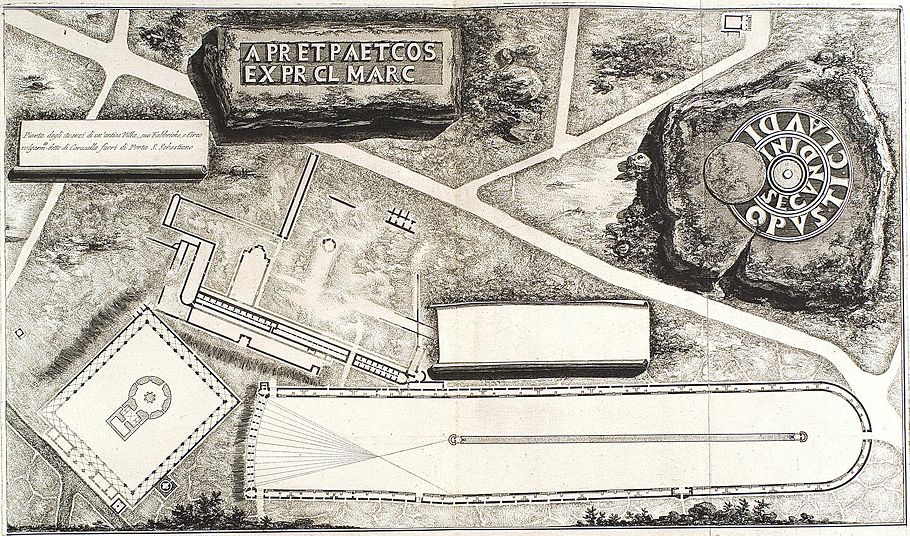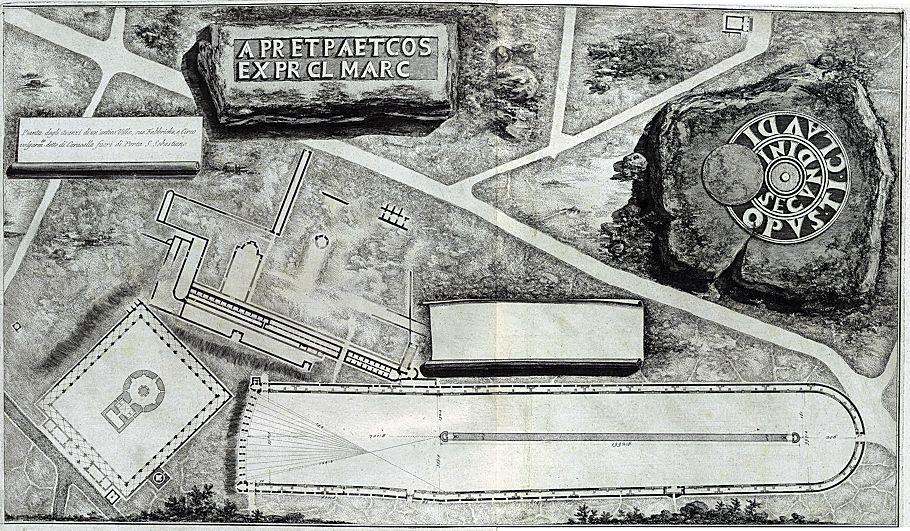The Discovery of Piranesi's Final Project |
|
The first questions raised by the two near identical circus site plans are, "Who drew them and why did Francesco append them to Le Antichitą Romane vol. 1?" It seems doubtful that Francesco would add any plate to Le Antichitą Romane that was not the product of his father or himself, and, if Francesco were the person responsible for the site plans, he would have signed them as such. Thus, given Piranesi's expressed curiosity and interest in the depicted circus4, it is then perfectly reasonable to attribute the site plans to Piranesi himself. And, with the attribution of Piranesi as the person responsible for this pair of site plans, the incompleteness and obscurity of the overall composition of the etching becomes much less inscrutable.
|
4. Two entries from Sir Roger Newdigate's 1775 diary are about Piranesi and "his plan of the Circus of Caracalla." On March 8 Piranesi brought his plan of the Circus of Caracalla to Newdigate's home in Rome and "explained it." On March 10 Newdigate went to Piranesi's workshop where Piranesi "lent his plan of Circus of Caracalla," and then Newdigate went to the circus site on the Via Appia where he "saw the Temple & Portico and examined the circus till past 4." See Francis Russell, "Piranesi and Sir Roger Newdigate: a footnote" in The Burlington Magazine (CL, August 2008), p. 547.
|
««««
calendar
»»»»
|

